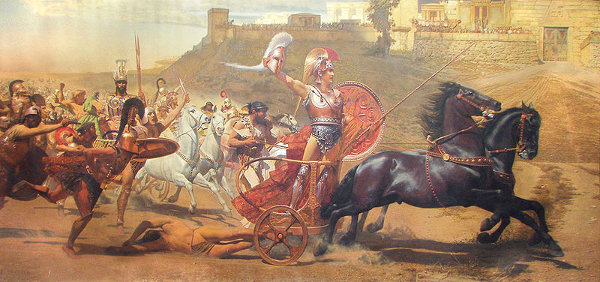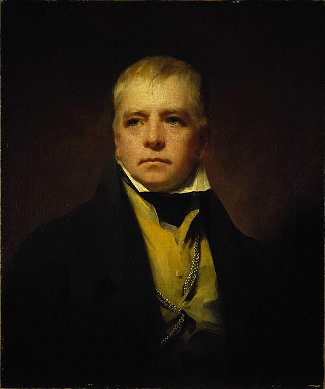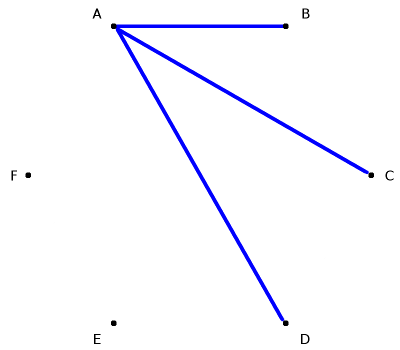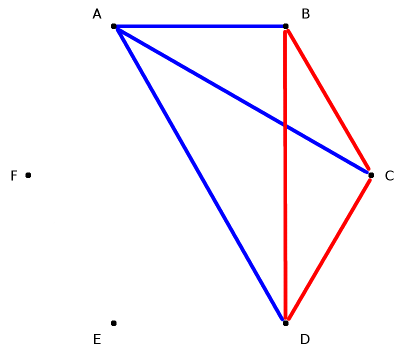
“A kitten is so flexible that she is almost double. The hind parts are equivalent to another kitten with which the fore part plays. She does not discover that her tail belongs to her till you tread upon it.” — Thoreau

“A kitten is so flexible that she is almost double. The hind parts are equivalent to another kitten with which the fore part plays. She does not discover that her tail belongs to her till you tread upon it.” — Thoreau
Let us consider this pair of cases:
In the first, Smith stands to gain a large inheritance if anything should happen to his six-year-old cousin. One evening while the child is taking his bath, Smith sneaks into the bathroom and drowns the child, and then arranges things so that it will look like an accident.
In the second, Jones also stands to gain if anything should happen to his six-year-old cousin. Like Smith, Jones sneaks in planning to drown the child in his bath. However, just as he enters the bathroom Jones sees the child slip and hit his head, and fall face down in the water. Jones is delighted; he stands by, ready to push the child’s head back under if it is necessary, but it is not necessary. With only a little thrashing about, the child drowns all by himself, ‘accidentally,’ as Jones watches and does nothing.
Now Smith killed the child, whereas Jones ‘merely’ let the child die. That is the only difference between them. Did either man behave better, from a moral point of view?
— James Rachels, “Active and Passive Euthanasia,” New England Journal of Medicine, January 1975
This one is slippery, so watch it closely.
A poor old lady, with little money and plenty of time, sat quietly one day trying to devise a plan for making a little change. She finally came up with a very clever idea. Taking an old necklace, which she knew was worth only $4, she went to a pawnshop and pawned it for $3. Then, on a street corner, she started a friendly acquaintance with a young man, finally persuading him to buy the pawnticket for only $2. Now, she had $5 altogether and thus had made $1 profit. The pawnbroker wasn’t out any money since he paid only $3 for a $4 item, and the young man paid only $2 to get the $4 necklace. Who lost?
— Raymond F. Lausmann, Fun With Figures, 1965
On Feb. 18, 1855, French-Canadian cattle dealer Louis Remme deposited $12,500 in gold in the Sacramento branch of the Adams & Company bank. Shortly afterward he received word that Page, Bacon & Company of St. Louis, the largest financial company west of the Alleghenies, had failed. He returned to the bank but it had already been liquidated, depleted by desperate depositors.
So Remme jumped on a horse and rode 665 miles north in 143 hours, including 10 hours of sleep and brief stops for food. He arrived in Portland, Ore., on Feb. 26, went straight to the Adams & Company bank, presented his certificate of deposit, and withdrew the $12,500. He had beaten the steamer that carried news of the bank’s failure — and Portland had no telegraph.

“‘There really are fictional heroes’ sounds true, but ‘Fictional heroes really exist’ sounds false.”
— James Cargile, Paradoxes, 1979
Cornelius Whur (1782–1853) had a gold heart and a tin ear. Moved by genuine feeling for the unfortunates around him, the Wesleyan minister produced some of the most lamentably funny poems of the 19th century:
Alas! Alas! the father said,
O what a dispensation!
How can we be by mercy led,
In such a situation?
Be not surprised at my alarms,
The dearest boy is without arms!
I have no hope, no confidence,
The scene around is dreary;
How can I meet such vast expense?
I am by trying weary.
You must, my dearest, plainly see
This armless boy will ruin me.
Whur’s other efforts include “The Diseased Legs” and “The Cheerful Invalid.” He has no monument.

[Walter Scott] was scrupulously careful … to answer all letters addressed to him. In those days of high postage this was a tax not only on his time and his temper, but on his purse as well. He spent as much as one hundred and fifty pounds a year in postage. Once a mighty package came from the United States. Five pounds were due on it. When opened it was found to contain a manuscript called ‘The Cherokee Lovers,’ a drama written by a New York lady, who begged Scott to read and correct it, write a prologue and an epilogue, and secure a manager and a publisher. A fortnight later another package of similar size, charged with a similar postage, was placed in Scott’s hands. When opened, out popped another copy of ‘The Cherokee Lovers,’ with a note from the authoress explaining that, as the mails were uncertain, she had deemed it prudent to forward a duplicate.
— William Shepard Walsh, Handy-Book of Literary Curiosities, 1892
Any group of six people must contain at least three mutual friends or three mutual strangers.
Represent the people with dots, and connect friends with blue lines and strangers with red. Will the completed diagram always contain a red or a blue triangle?
Because A has five relationships and we’re using two colors, at least three of A’s connections must be of the same color. Say they’re friends:

Already we’re perilously close to completing a triangle. We can avoid doing so only if B, C, and D are mutual strangers — in which case they themselves complete a triangle:

We can reverse the colors if B, C, and D are strangers to A, but then we’ll get the complementary result. The completed diagram must always contain at least one red or blue triangle.
I think this problem appeared originally in the William Lowell Putnam mathematics competition of 1953. Six is the smallest number that requires this result — a group of five people would form a pentagon in which the perimeter might be of one color and the internal connections of another.
(Update: In fact the more general version of this idea was adduced in 1930 by Cambridge mathematician F.P. Ramsey. It is very interesting.) (Thanks, Alex.)
On Aug. 17, 1921, a bedraggled carrier pigeon landed at the feet of a policeman in Columbus Circle in New York. Tied to its leg was this message:
Notify Dan Singer, Belleclaire Hotel. I am lost in Hoodoo Mountains, Yellowstone Park. Send help, provisions and pack-horses. HELLER. 8-13-21.
At the Belleclaire Hotel police found insurance agent Daniel J. Singer, who identified Heller as naturalist and photographer Edmund H. Heller and recognized the bird as a veteran that had accompanied him on a trip to Africa with Theodore Roosevelt in 1909. Heller had kept it on the roof of the Belleclaire and taken it with him to Yellowstone recently to gather material for a lecture tour.
This was both dramatic and fishy. If the bird had left Wyoming on Aug. 13 then it had flown 1,900 miles in five days, an astonishing feat. Sure enough, when reporters contacted the superintendent of Yellowstone, he responded, “Edmund Heller is here. There is no foundation whatever for the report that he is or has been lost.”
Apparently someone had arranged the hoax in order to publicize Heller’s lectures, forging his signature on the note. The district attorney saw little humor in the stunt and began issuing subpoenas. The New York Times noted, “At the Belleclaire it was said that Singer was out of town, but had disclaimed responsibility and insisted that some person in the hotel perpetrated the hoax.”

I send you a small sketch, ‘A Musical Cat.’ It will be perceived that each stroke is a sign used in music, and for the benefit of the uninitiated I give this explanation: Eyes, pauses; ears and nose, accents; whiskers, crescendos; mouth, mordente, outline of head, ties; collar, staff; bells, notes; body, two phrase lines; feet, two crescendos; toes, flats and sharps; tail, two ties.
— Mr. W. Gough, in Strand, October 1906
There was a young curate of Kew
Who kept a tom cat in a pew;
He taught it to speak
Alphabetical Greek
But it never got farther than μ.
— Anonymous